
Digital Wallet: Guide to Build, Features, and How It Works
- Digital wallet is a virtual storage for payment info (cards, points), enabling secure, convenient transactions
- They benefit both consumers and businesses
- Building a digital wallet requires a suitable tech stack, microservices architecture, and strong security
- User-friendly interface and personalization are key for a great user experience
- Payment gateway integration is essential for secure and efficient transactions
- Rigorous testing and optimization ensure a high-quality, reliable wallet
- Scalability is crucial for handling growth of a digital wallet app
Imagine you build a digital wallet that needs to hold way more money than it was designed for. That’s basically the scalability problem – when your system can’t handle the growth and demand.
With over 53% of Americans embracing e-wallets, creating a payment app that handles the ever-growing traffic is essential. In other words, scalable electronic wallets are vital for success.
In this blog, we’ll guide you through building a scalable e-wallet that engages customers and stands the test of time. So, read ahead and acquaint yourself with the steps that give you an edge in the competitive online payment market.
What is a Digital Wallet?
Imagine a digital pocket that holds all your cards, cash, and loyalty points. That’s essentially what a digital wallet is. It’s a virtual storage space for your payment information, accessed through your smartphone or other devices.
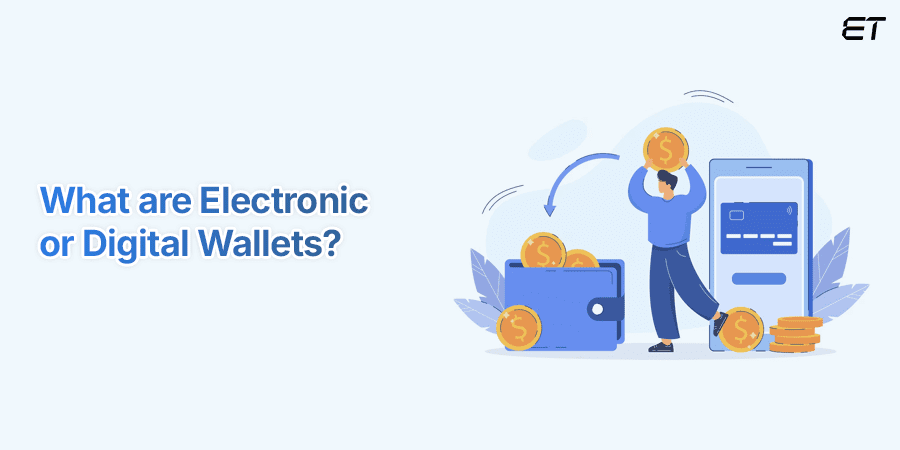
But why is it so popular?
The convenience and security it offers are key factors. With a digital wallet, you can quickly and easily make payments without fumbling for physical cards or cash. Plus, many digital wallets employ advanced security features to protect your personal information.
In essence, a digital wallet is a modern-day necessity, providing a seamless and secure payment experience.
Here’s the technical definition of a digital or e-wallet:
| A digital wallet is a software application that stores and manages the payment information on your electronic device, such as credit cards, debit cards, and loyalty points. It allows you to make secure and convenient payments through various online, in-app, and in-store channels. |
A digital wallet is a software application that stores and manages the payment information on your electronic device, such as credit cards, debit cards, and loyalty points. It allows you to make secure and convenient payments through various online, in-app, and in-store channels.
Need expert assistance on building an electronic wallet? Drop in your requirements and allow us to assist you.
Why Create a Digital Wallet?
Electronic wallets offer several benefits, both for consumers and businesses. After understanding these advantages, you can get your answer to the ‘why to create’ part.

Here’s a brief explanation of the benefits of a digital wallet for consumers:
- Convenience: Digital wallets eliminate the need to carry physical cards or cash, streamlining the payment process
- Security: Advanced security features, such as tokenization and biometric authentication, protect your personal and financial information
- Loyalty Programs: Many digital wallets integrate with loyalty programs, offering rewards, discounts, and exclusive offers
- Accessibility: Digital wallets can be accessed from anywhere with an internet connection, making it easy to make payments on the go
Now, let’s understand the benefits of e-wallets for businesses:
- Increased Sales: Offering a convenient and secure payment option can lead to increased sales and customer satisfaction
- Reduced Transaction Costs: E-wallets often have lower transaction fees compared to traditional payment methods
- Enhanced Customer Loyalty: Loyalty programs integrated with these wallets can build customer loyalty and repeat business
- Data Insights: Digital or electronic wallets can provide valuable data on customer behavior, preferences, and spending habits, enabling businesses to tailor their marketing strategies
Overall, creating a digital wallet is a lucrative decision that can benefit consumers and businesses.
Types of Digital Wallets
Take a look at the table below to understand the main types of digital wallets.
| Feature | Closed Wallet | Semi-Closed Wallet | Open Wallet | Crypto Wallet |
| Scope of Use | Limited to a single company/platform | Usable at a network of partnered merchants | Accepted at most merchants accepting digital payments | Specifically for cryptocurrencies |
| Functionality | Primarily for purchases within the ecosystem | Broader use, often for specific services/regions | Versatile, like a digital version of a physical wallet | Stores and manages cryptocurrency keys |
| Currency Type | Traditional currency (e.g., USD, INR) | Traditional currency (e.g., USD, INR) | Traditional currency (e.g., USD, INR) | Cryptocurrencies (e.g., Bitcoin, Ethereum) |
| Key Difference | Restricted usage | Limited merchant acceptance | Wide acceptance, often with cash withdrawal | Manages cryptographic keys for crypto |
| Examples | Amazon Pay | Paytm, PhonePe (in some regions) | Google Pay, Apple Pay, Samsung Pay | MetaMask, Ledger Nano S |
How Do Electronic or Digital Wallets Work?
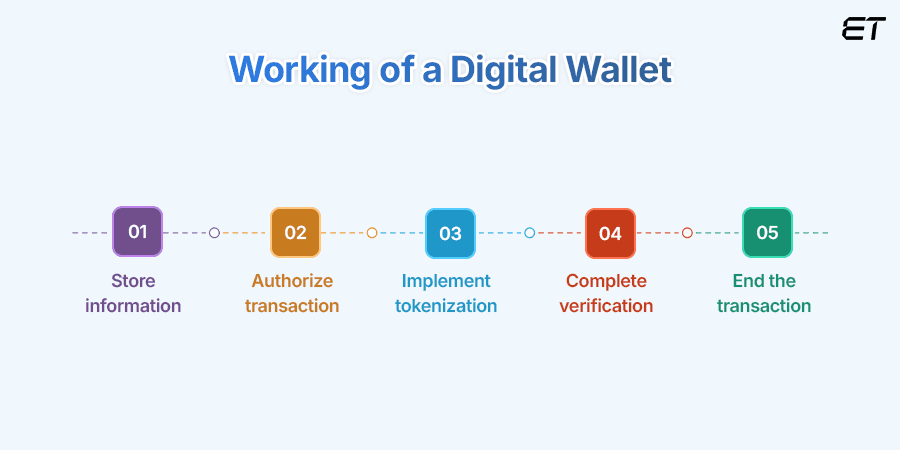
Simply put, digital or e-wallets operate by storing your payment information digitally. This information includes credit cards, debit cards, loyalty points, and cryptocurrency.
When you want to make a purchase, you select your desired payment method from the e-wallet app and authorize the transaction using a password, fingerprint, or facial recognition.
The underlying technology behind e-wallets is ‘tokenization.’
This process replaces your card details with unique codes, ensuring your sensitive information remains secure. When you make a payment, the token is sent to the merchant, who then verifies it with the payment network.
E-wallets can be used for a variety of transactions, including:
- Online shopping: Buying products and services from e-commerce web portals
- In-app purchases: Purchasing items or services within mobile apps
- In-store payments: Using your smartphone or wearable device to pay at physical stores
- Peer-to-peer transfers: Sending money to friends and family
A digital wallet’s specific features and functionality can vary depending on the provider. However, most e-wallets offer a similar core experience, providing a convenient and secure way to manage your payments.
Technical Steps to Build Your Digital Wallet
Building a digital wallet requires a solid foundation in technology. So, in this section, we won’t elaborate on the basic steps like requirement gathering or planning.
Instead, we will focus only on the technical aspects. Scroll ahead to understand the key steps.
1. Choose a Technology Stack
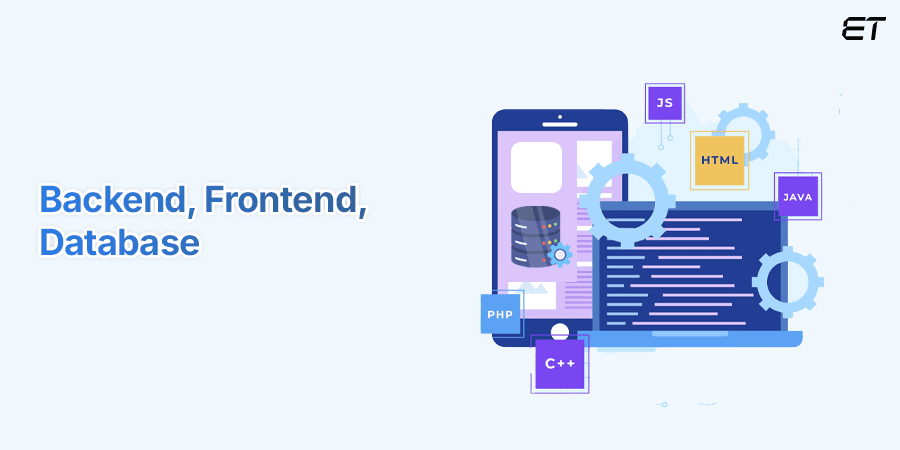
Selecting an appropriate technology stack is a crucial step in building a digital wallet. The right combination of tools and frameworks can impact your application’s scalability, performance, and security.
Here’s a breakdown of the key factors to consider when choosing your technology stack:
Backend Development
- Programming Language: Consider languages like Java, Python, or Node.js for their popularity, community support, and scalability
- Framework: Evaluate frameworks like Spring Boot (Java), Django (Python), or Express.js (Node.js) for their features, ease of use, and integration capabilities
Frontend Development
- Framework: Choose a framework like React, Angular, or Vue.js to build a modern and responsive user interface
- Relational Database: PostgreSQL is a popular choice due to its reliability, scalability, and robust features
- NoSQL Database: MongoDB is a good option for handling unstructured data and scaling horizontally
Remember to consider your project’s requirements, team expertise, and long-term goals when deciding.
Want to hire developers who can handle all technical activities? Choose our full stack programmers today!
2. Design the Architecture

Designing the architecture of e-wallets is critical in ensuring its scalability, performance, and maintainability. A well-structured architecture provides a solid foundation for building a robust and reliable application.
Here are some key considerations when designing the architecture of your digital wallet:
Microservices Architecture is a good choice.
- Break down your application into smaller, independent services that can be developed, deployed, and scaled independently
- Microservices allow you to scale individual components as needed without affecting the entire application
- They also make it easier to add new features or modify existing ones without disrupting the entire system
By carefully considering these factors and designing a well-structured architecture, you can create a digital wallet that is scalable, reliable, and capable of meeting the demands of your growing user base.
Need to make the choice between servereless and microservices architectures? Read our blog now!
3. Develop Security Features

Protecting user data and preventing fraud is essential for building trust and ensuring the long-term success of your digital wallet. Here are some key security features to consider implementing:
Tokenization
- Replace Sensitive Data: Replace sensitive card details with unique tokens, preventing unauthorized access and reducing the risk of data breaches
- Enhanced Security: Tokenization adds a layer of protection by separating your actual card details from the transaction process
Encryption
- Protect Data at Rest and in Transit: Use encryption algorithms to protect user data both when it’s stored on your servers (at rest) and when it’s being transmitted (in transit)
- Strong Encryption Standards: Choose strong encryption standards like AES (Advanced Encryption Standard) to ensure the security of your data
Biometric Authentication
- Incorporate biometric authentication, such as fingerprint or facial recognition, to require users to verify their identity before accessing their wallet
- Biometric authentication adds an extra layer of protection against unauthorized access
Realizing that security is an ongoing process, staying vigilant, and adapting to evolving threats is essential.
4. Implement User Interface
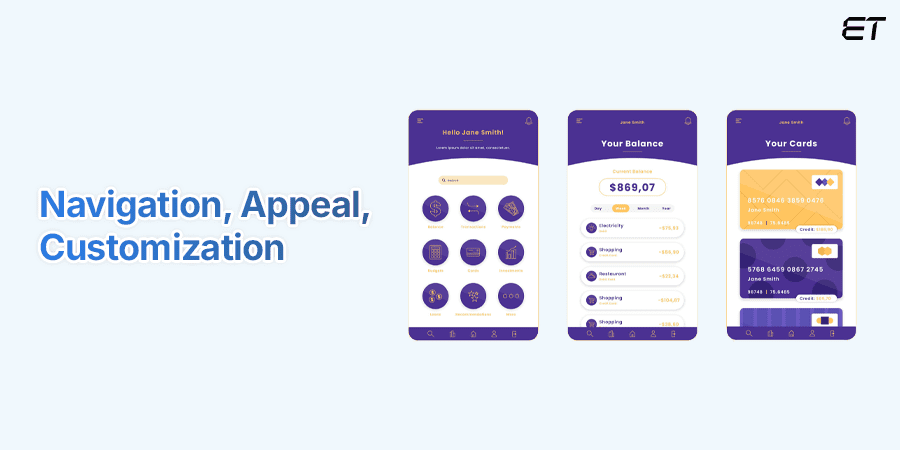
A well-designed UI is essential for the success of electronic wallets. A user-friendly interface can enhance the overall user experience, drive engagement, and increase customer satisfaction.
Here are some key considerations when implementing your digital wallet’s UI:
Intuitive Navigation
- Use clear and concise labels for buttons, menus, and other navigation elements
- Organize content logically and intuitively, making it easy for users to find what they need
- Maintain a consistent design language throughout the app to create a cohesive and familiar experience
Visual Appeal
- Use visually appealing elements, such as colors, fonts, and images, to create an engaging and enjoyable interface
- Design for mobile devices first, as a growing number of users access apps on their smartphones
- Ensure your UI is accessible to users with disabilities by following accessibility guidelines like WCAG (Web Content Accessibility Guidelines)
Personalization
- Consider incorporating personalization features to provide a more tailored experience for each user
- Offer personalized recommendations based on user preferences and behavior
By following these guidelines, you can create a digital wallet UI that is both visually appealing and easy to use.
5. Integrate with Payment Gateways
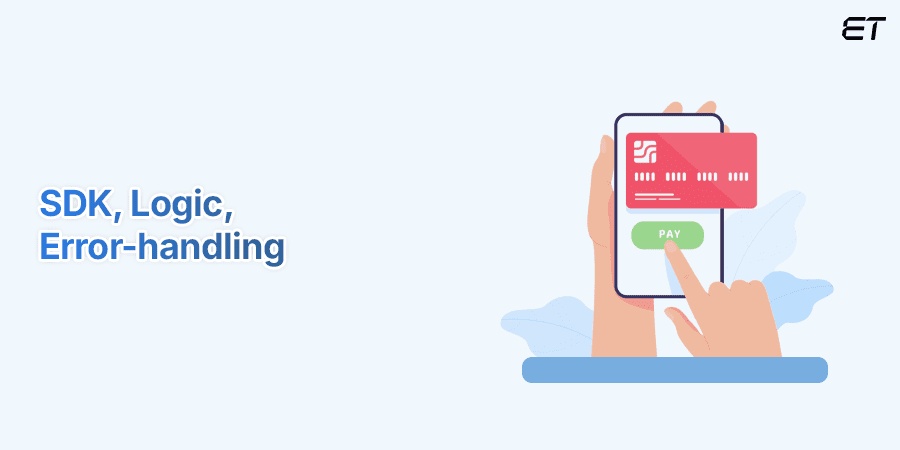
Integrating your e-wallets with reliable payment gateways is crucial for providing a seamless and secure payment experience. Payment gateways act as intermediaries between your wallet and the card networks, handling the complex processes involved in processing transactions.
First, you should choose a suitable payment gateway. Consider these two points:
- Evaluate Options: Research and compare different payment gateways based on factors like supported payment methods, transaction fees, security features, and ease of integration
- Consider Your Target Market: Select a payment gateway that is popular in your target market and supports the payment methods your users prefer
Next, it is essential to obtain the necessary API keys and credentials from the chosen payment gateway to authenticate your wallet’s requests.
Here’s how you implement the API integration:
- Integrate the payment gateway’s API into your digital wallet application using the provided SDK or documentation
- Implement the necessary logic to initiate, authorize, and capture payments using the payment gateway’s API
- Deploy error-handling mechanisms to handle potential issues during the payment process
Always remember that a well-integrated payment gateway will enhance the overall usability of your digital wallet and contribute to its success.
6. Test and Optimize

Thorough testing and optimization are essential for ensuring the quality and performance of your digital wallet. You can deliver a seamless and reliable user experience by identifying and addressing issues early on.
Here’s a breakdown of the key steps involved in testing and optimizing your digital wallet:
Functional Testing
- Test Core Features: Test all core features of your wallet, including payment processing, account management, and loyalty program integration
- Edge Cases: Test edge cases and unusual scenarios to identify potential issues
Performance Testing
- Load Testing: Simulate heavy loads to assess your wallet’s performance under stress
- Stress Testing: Push your wallet to its limits to identify bottlenecks and performance issues
- Optimization: Optimize your code, database, and infrastructure to improve performance
Security Testing
- Vulnerability Assessment: Conduct vulnerability assessments to identify potential security weaknesses
- Penetration Testing: Simulate attacks to test your wallet’s security defenses
- Regular Updates: Keep your software and dependencies up-to-date to address security vulnerabilities
User Acceptance Testing (UAT)
- Real-World Feedback: Involve real users in UAT to gather feedback on the user experience
- Identify Usability Issues: Identify any usability issues or areas for improvement
A/B Testing
- Experimentation: Conduct A/B testing to compare different versions of your wallet and identify the most effective design elements
- Data-Driven Decisions: Use data to make informed decisions about UI changes and feature additions
Overall, a well-tested and optimized wallet will enhance user satisfaction and contribute to your business’s success.
Want to get a glimpse of how our QA team functions? Read this blog to get a quick idea.
Ensuring Scalability in E-wallets
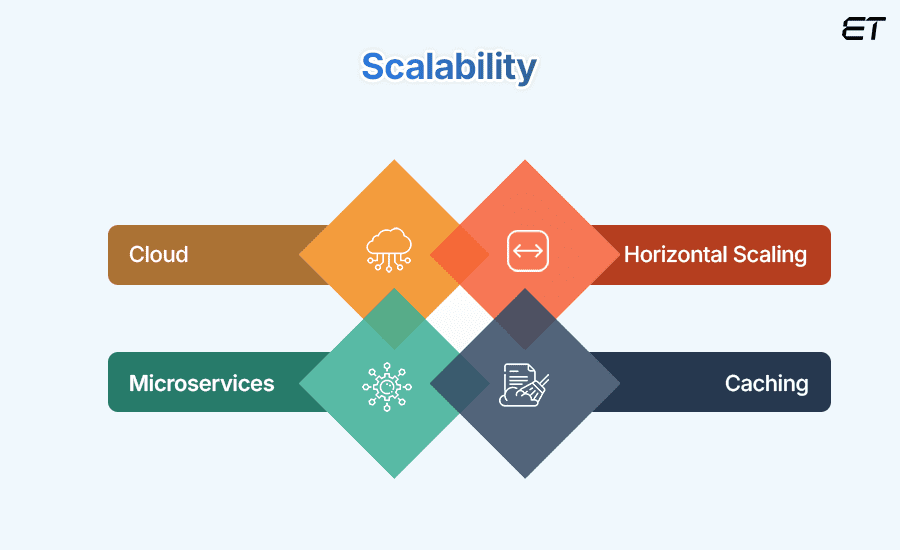
How can you ensure scalability in your e-wallet? To answer this question, you need to understand the meaning of this term.
Scalability is the ability of your wallet to handle increasing loads and demand without compromising performance. As the number of users and transactions grows, your e-wallet must be able to adapt and scale accordingly.
Here are some key strategies to ensure scalability in your e-wallet:
Cloud-Based Infrastructure
- Leverage cloud platforms like AWS, GCP, or Azure to easily scale your infrastructure up or down based on demand
- Cloud-based solutions offer a pay-as-you-go pricing model, allowing you to optimize costs
Microservices Architecture
- Break down your e-wallet into smaller, independent services that can be developed, deployed, and scaled individually
- Microservices reduce the risk of a single point of failure, enhancing the overall reliability of your system
Horizontal Scaling
- Add more servers to your infrastructure to handle increased load without affecting performance
- Horizontal scaling allows you to allocate resources effectively to meet demand
Caching
- Implement caching mechanisms to store frequently accessed data in memory, reducing the load on your database
- Caching can significantly improve response times and enhance the user experience
Remember, scalability is essential to continuously monitor and optimize your system as your user base expands.
The Pros and Cons of Digital Wallets
Here’s a simple table stating the perks and pitfalls of these interesting digital products.
| Feature | Pros | Cons |
| Convenience | Fast, cardless, easy-to-use | Tech-dependent, prone to glitches |
| Security | Stronger security (tokenization, biometrics) | Hacking risk, losses if device is stolen |
| Speed | Quick checkout | Not universally accepted |
| Rewards | Loyalty programs, cashback, discounts | Can encourage overspending |
To Wrap Up
Creating a scalable digital wallet requires a comprehensive approach that addresses various technical and business aspects. Many factors must be considered, from choosing the right technology stack and designing a robust architecture to implementing robust security features and ensuring a seamless user experience.
By following the steps outlined in this blog, you can build a digital wallet that meets your users’ needs and stands the test of time. Remember, scalability is an ongoing process, and it’s essential to continuously monitor and optimize your wallet as your user base grows.
If you’re looking for a team of experienced developers to help you build a scalable digital wallet, we’re here to assist you. Our experts have the skills and knowledge to create a customized solution that meets your specific requirements.
Frequently Asked Questions
1. How can I ensure the security of user data in my digital wallet?
Implementing strong security measures is crucial. Consider using tokenization, encryption, and biometric authentication. Conduct security audits regularly and stay updated on the latest security best practices.
2. What are some common challenges in scaling e-wallets?
Increased traffic, data growth, and performance bottlenecks often create scalable challenges. Consider using cloud-based infrastructure, microservices architecture, and caching mechanisms to address these.
3. How can I improve the user experience of my digital wallet?
Focus on creating a user-friendly interface with intuitive navigation and clear design elements. Incorporate personalization features and optimize for performance to enhance the overall experience.
4. What are the key factors to consider when choosing a payment gateway for my digital wallet?
Evaluate factors such as supported payment methods, transaction fees, security features, and ease of integration. When making a decision, consider your target market and your wallet’s specific requirements.
5. How can I measure the success of my digital wallet?
Track key metrics like user acquisition, transaction volume, customer satisfaction, and average revenue per user. Analyze these metrics to identify areas for improvement and measure your wallet’s overall success.





